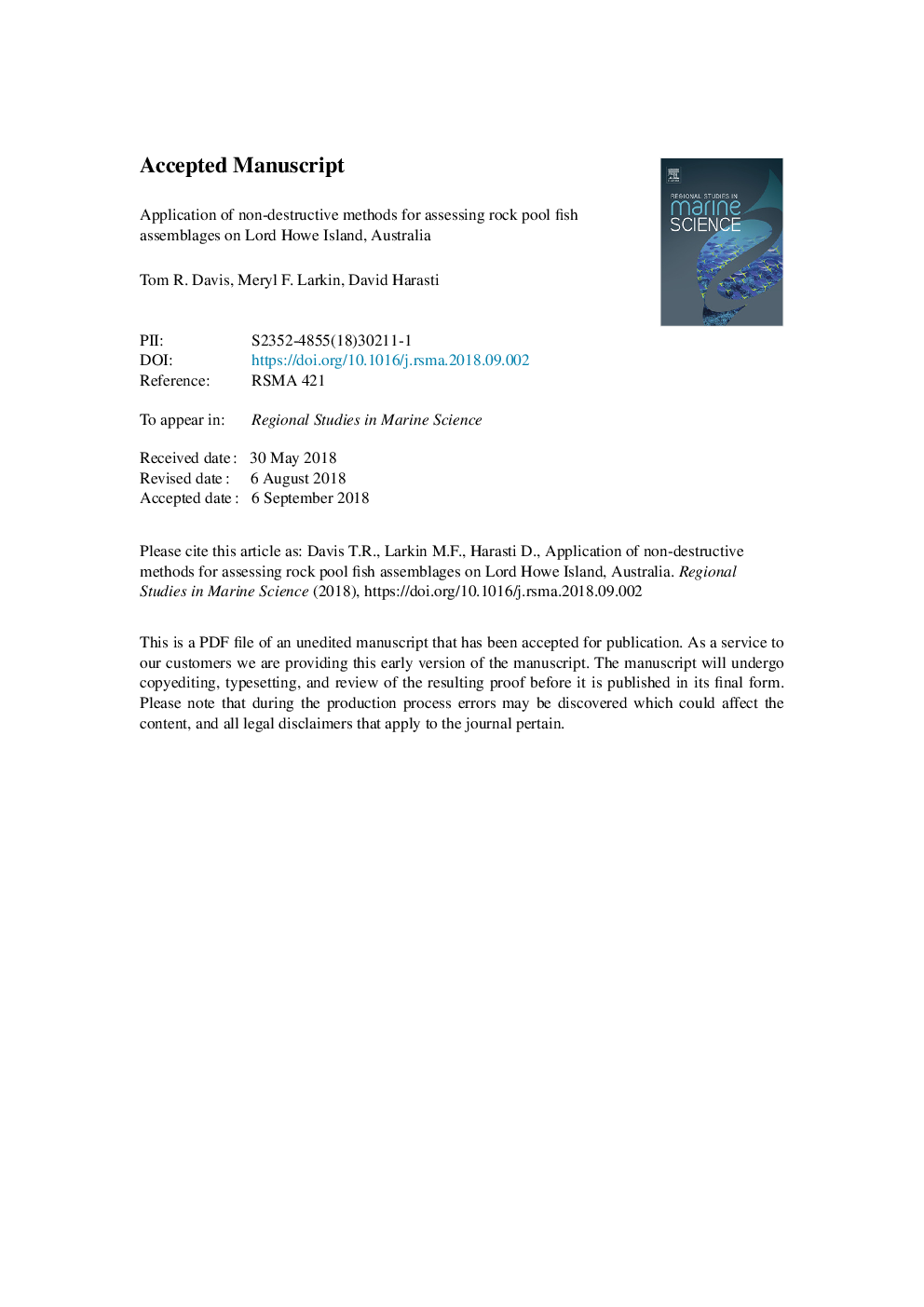| Article ID | Journal | Published Year | Pages | File Type |
|---|---|---|---|---|
| 11033241 | Regional Studies in Marine Science | 2018 | 21 Pages |
Abstract
These methods were tested for their effectiveness in assessing fish assemblages, using data from rock pools on Lord Howe Island (LHI), in New South Wales (NSW), Australia. VCs and OOVs required significantly less total survey time than mini-BRUVs, whereas mini-BRUVs provided advantages in the detection of fishes in small pools (<25 m3). Examination of mini-BRUVs' data, for 30 min samples, identified that the vast majority of fish species were detected within 15 min and indicated that a shorter 15 min sampling period would generally be suitable for collecting fish data from rock pools. The base-line data collected on fishes in LHI rock pools demonstrated the uniqueness of LHI assemblages, which were significantly different from those on the NSW coast. This study demonstrates that non-destructive sampling methods can be used in rock pool environments, making these methods suitable for sampling in inter-tidal habitats, especially within marine protected areas.
Related Topics
Physical Sciences and Engineering
Earth and Planetary Sciences
Oceanography
Authors
Tom R. Davis, Meryl F. Larkin, David Harasti,
